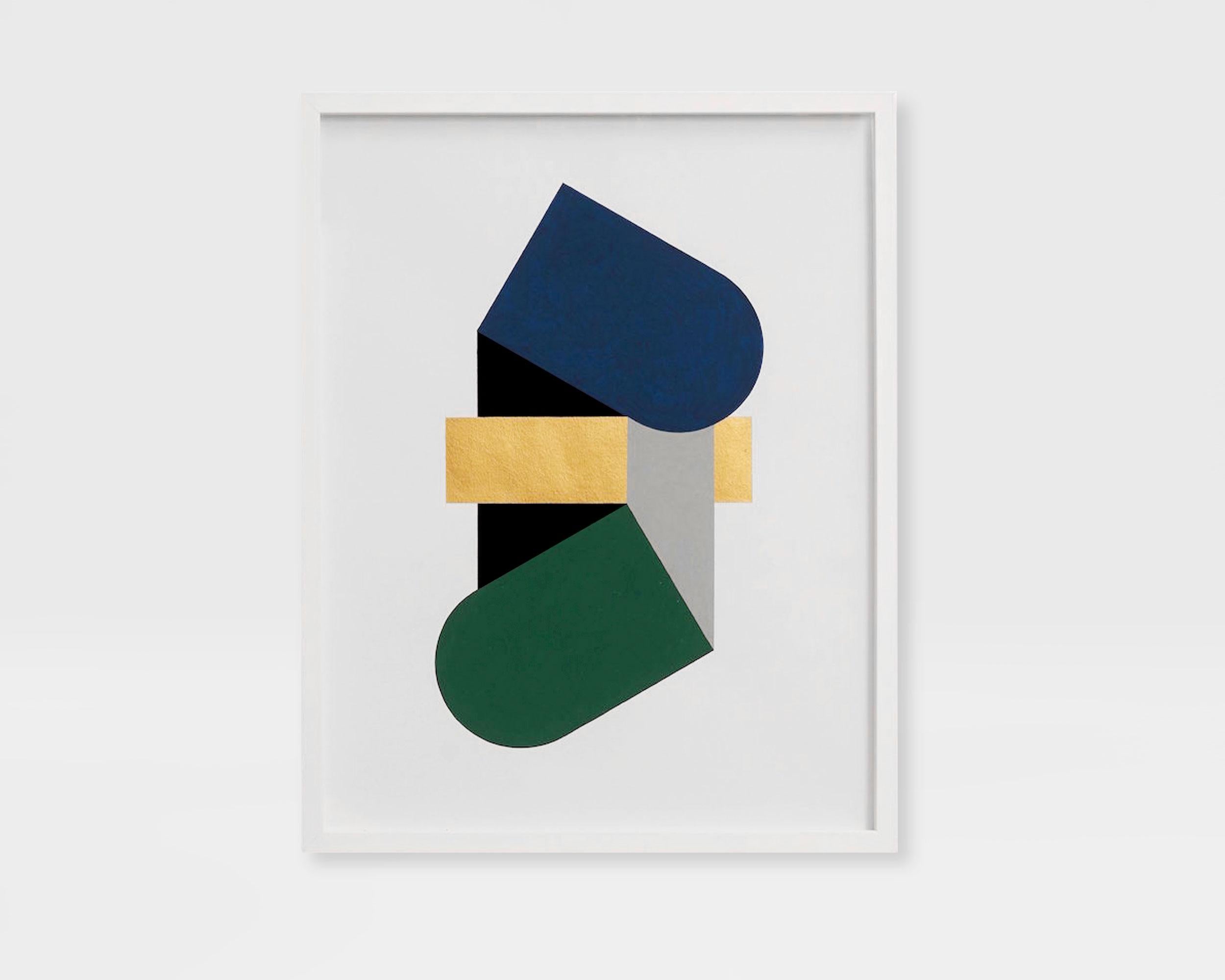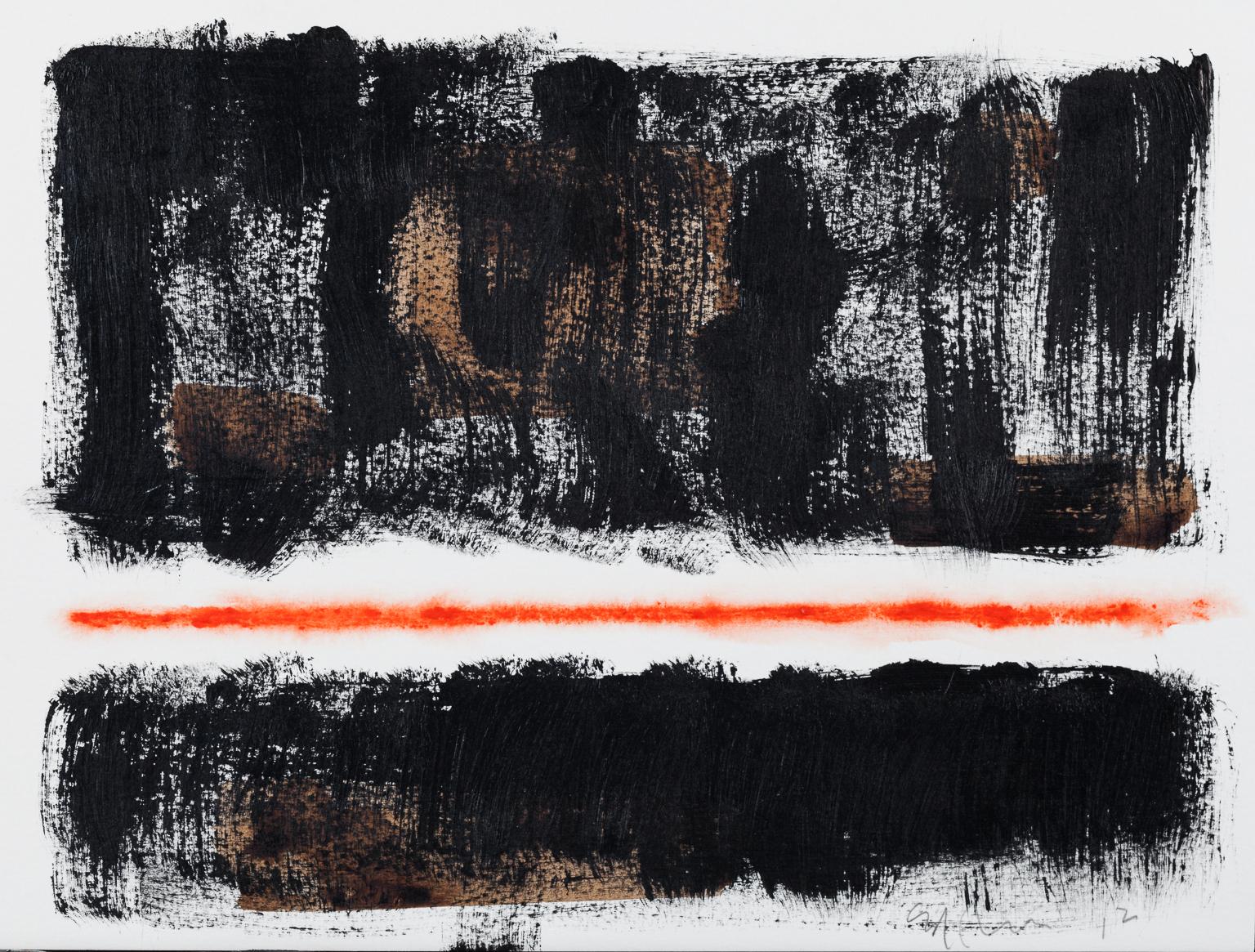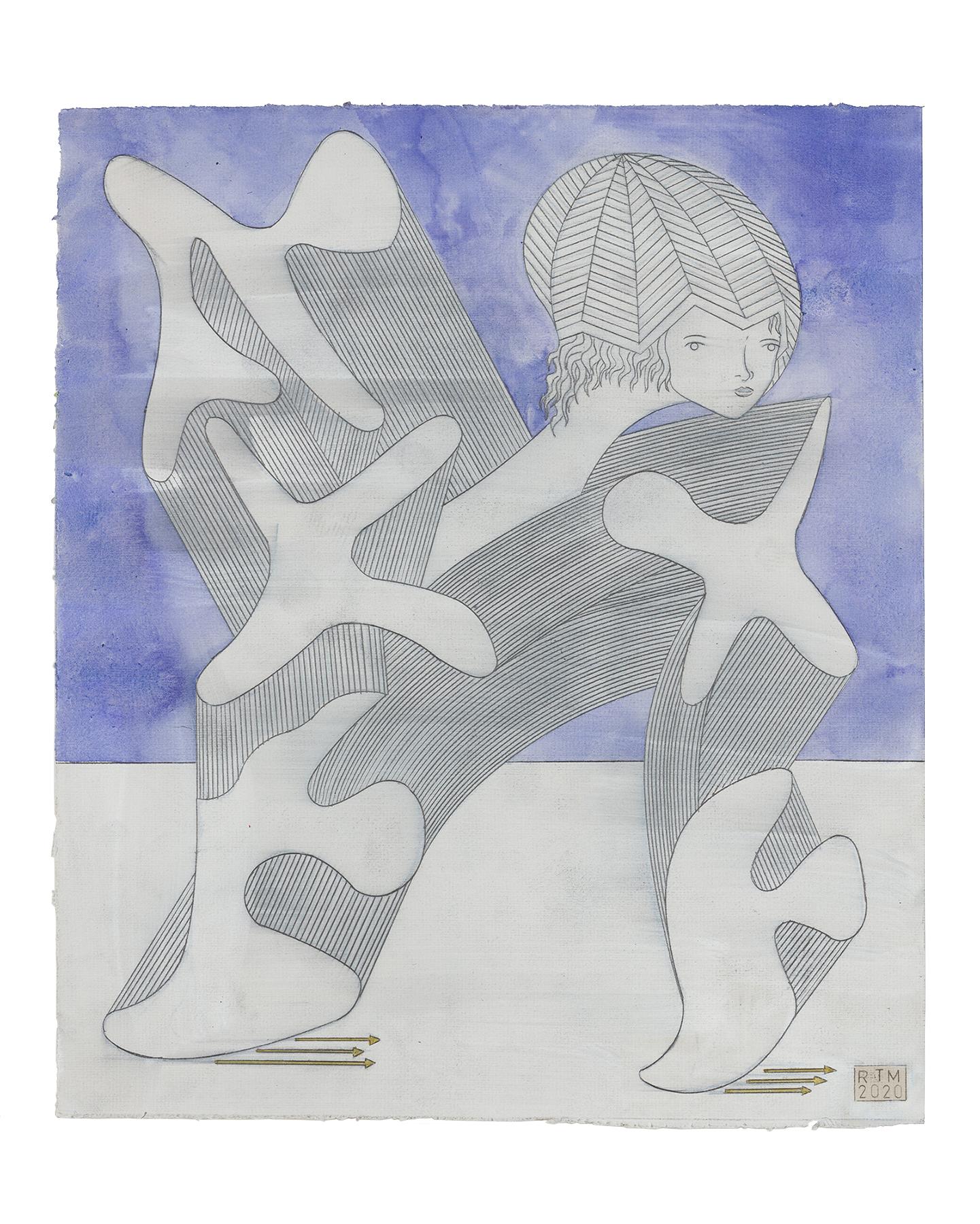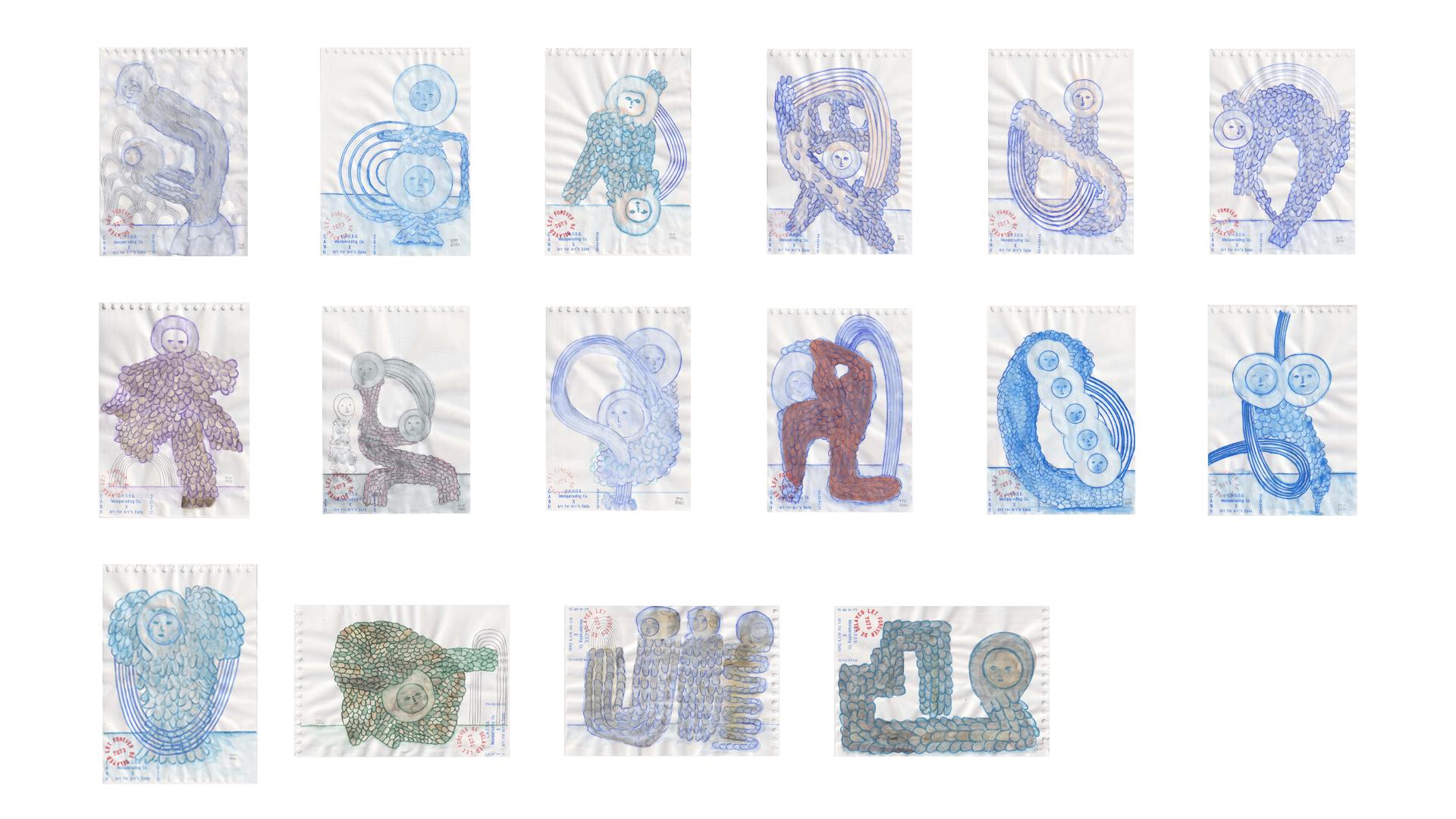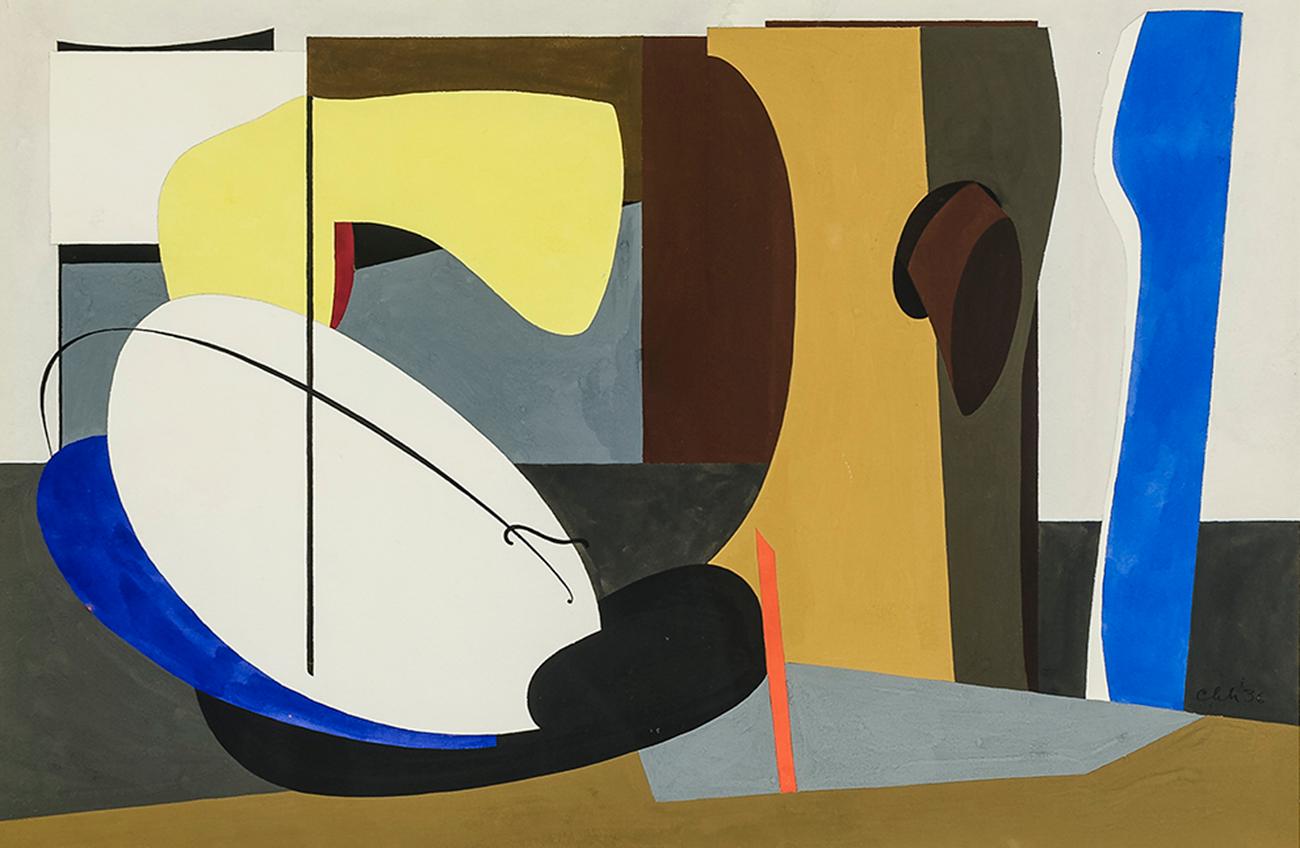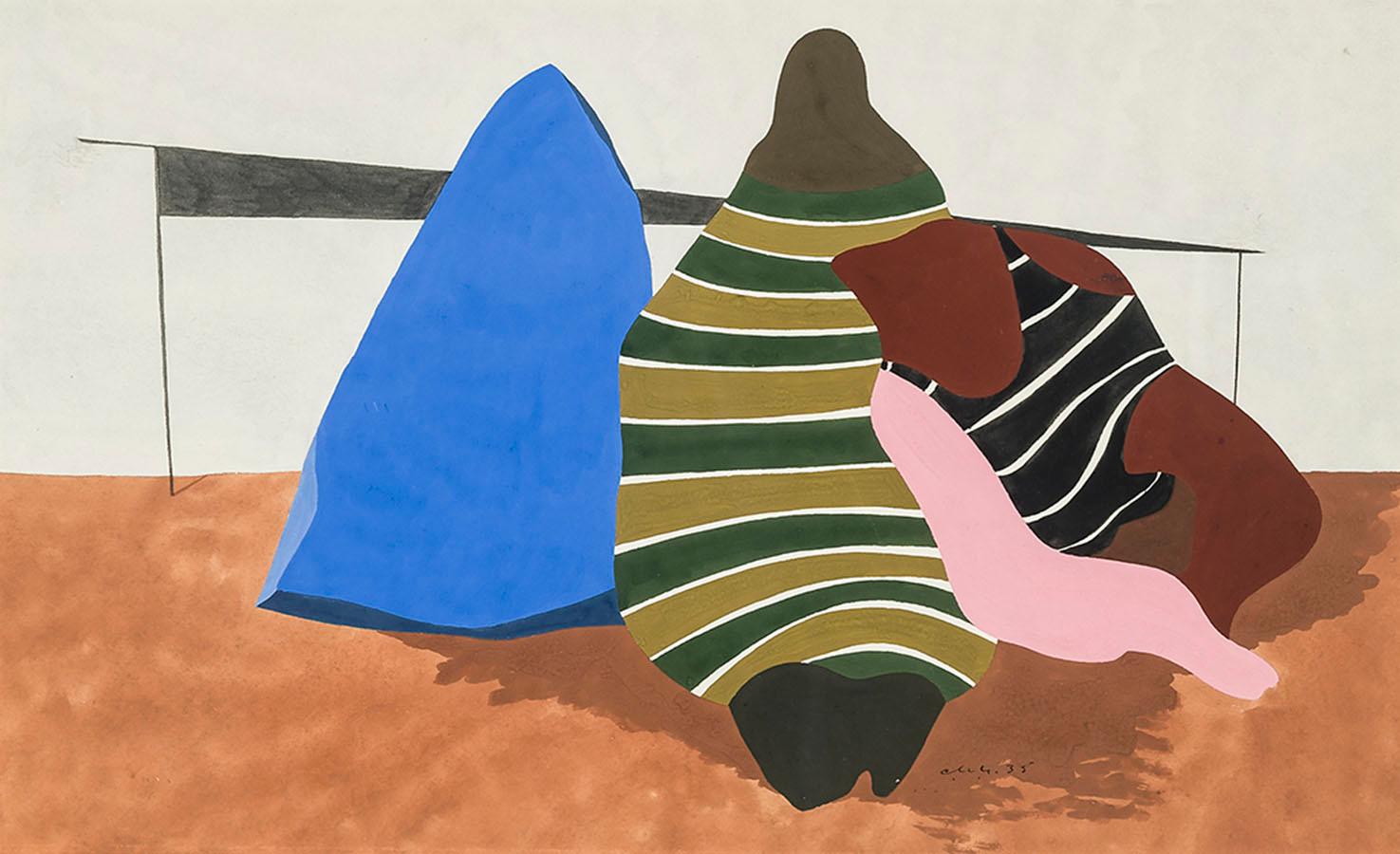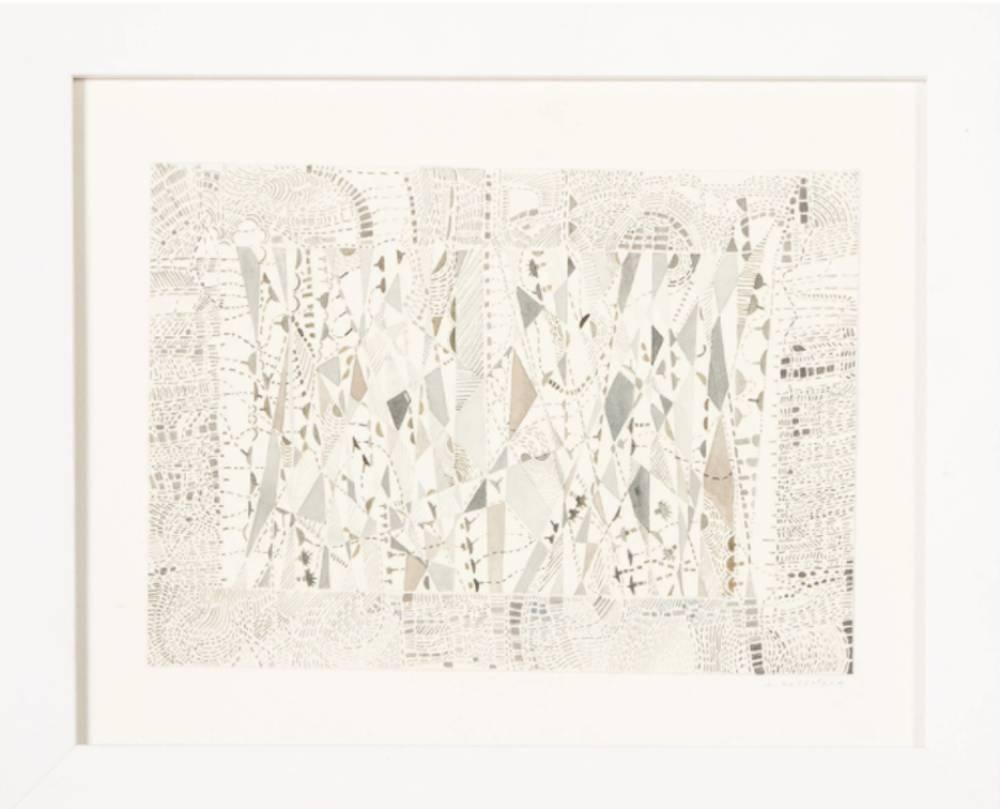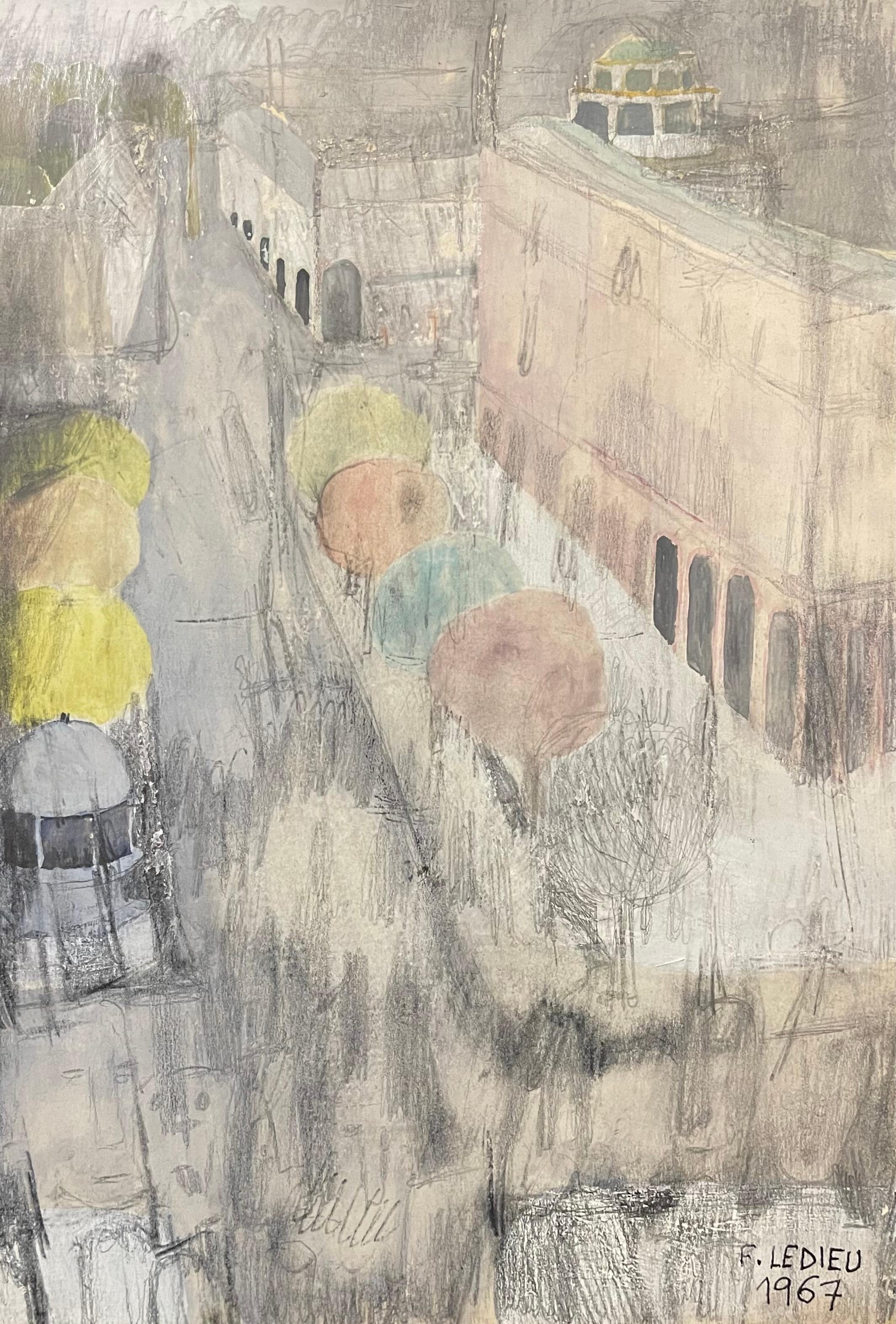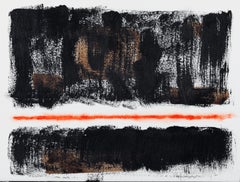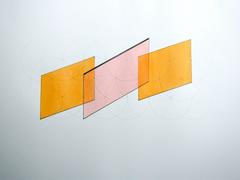
Geometric Relationships #6
View Similar Items
Want more images or videos?
Request additional images or videos from the seller
1 of 5
Brigitte ParuselGeometric Relationships #62016
2016
About the Item
- Creator:Brigitte Parusel (British)
- Creation Year:2016
- Dimensions:Height: 12.2 in (30.99 cm)Width: 18.1 in (45.98 cm)
- More Editions & Sizes:this drawing is unframed
- Medium:
- Movement & Style:
- Period:
- Condition:
- Gallery Location:Darien, CT
- Reference Number:1stDibs: LU17221306403
About the Seller
5.0
Vetted Seller
These experienced sellers undergo a comprehensive evaluation by our team of in-house experts.
Established in 2014
1stDibs seller since 2015
141 sales on 1stDibs
Typical response time: 10 hours
More From This SellerView All
- Brigitte Parusel, Geometric Relationships #1, _2022, Paper, Pencil, Color PencilBy Brigitte ParuselLocated in Darien, CTBrigitte Parusel's works are underlined by an emphasis on experimentation and her interest in working within the limitations of a system. Her drawings are part of an ongoing exploration of a geometric pattern of interconnected circles. The pattern is the basis for her large-scale installations, spatial sculptures and folded works. The drawings explore the geometric relationship of the patterns components and its potential as a blueprint for constructing form, shape and structure. Brigitte Parusel's animation 'After Albers...Category
2010s Bauhaus Abstract Drawings and Watercolors
MaterialsPaper, Pencil, Color Pencil
- Karen Schiff, Word Snake, 2014, Gouache, Rag Paper, GraphiteBy Karen SchiffLocated in Darien, CTKaren Schiff is an artist and wordsmith based in New York; she has always been a reader as well as a visual artist. Her drawings, paintings, installations, and performances combine t...Category
21st Century and Contemporary Abstract Geometric Abstract Drawings and W...
MaterialsGouache, Rag Paper, Graphite
- Karen Schiff, Word Snake F, 2014, Watercolor, Gouache, Rag Paper, PencilBy Karen SchiffLocated in Darien, CTKaren Schiff is an artist and wordsmith based in New York; she has always been a reader as well as a visual artist. Her drawings, paintings, installations, and performances combine t...Category
2010s Abstract Geometric Abstract Drawings and Watercolors
MaterialsWatercolor, Gouache, Rag Paper, Pencil
- Karen Schiff, Word Snake G, 2014, Watercolor, Gouache, Rag Paper, PencilBy Karen SchiffLocated in Darien, CTKaren Schiff is an artist and wordsmith based in New York; she has always been a reader as well as a visual artist. Her drawings, paintings, installations, and performances combine t...Category
2010s Abstract Geometric Abstract Drawings and Watercolors
MaterialsPencil, Watercolor, Gouache, Rag Paper
- Karen Schiff, Word Snake, 2014, Watercolor, Rag Paper, PencilBy Karen SchiffLocated in Darien, CTKaren Schiff is an artist and wordsmith based in New York; she has always been a reader as well as a visual artist. Her drawings, paintings, installations, and performances combine t...Category
2010s Abstract Geometric Abstract Drawings and Watercolors
MaterialsWatercolor, Rag Paper, Pencil
- Karen Schiff, Word Snake, 2014, Watercolor, Rag Paper, GraphiteBy Karen SchiffLocated in Darien, CTKaren Schiff is an artist and wordsmith based in New York; she has always been a reader as well as a visual artist. Her drawings, paintings, installations, and performances combine t...Category
21st Century and Contemporary Abstract Geometric Abstract Drawings and W...
MaterialsWatercolor, Rag Paper, Graphite
You May Also Like
- Dmitry Samygin 'Architectural Delusion 3' Contemporary Painting in Bauhaus StyleBy Dmitry SamyginLocated in Paris, FR"Architectural Delusion 3" Gouache on paper Measures: 68 x 53 cm, frame included (Signed on the back). Bauhaus style and geometric abstraction style. Geometric shapes in blue, gr...Category
21st Century and Contemporary Bauhaus Abstract Paintings
MaterialsGouache
- Dmitry Samygin 'Architectural Delusion 1' Contemporary Painting in Bauhaus StyleBy Dmitry SamyginLocated in Paris, FR"Architectural Delusion 1" Gouache on paper Measures: 68 x 53 cm, frame included (Signed on the back) Bauhaus style and geometric abstraction style. Geometric shapes in blue, gre...Category
21st Century and Contemporary Bauhaus Abstract Paintings
MaterialsGouache
- ThreadBy Ed TouchetteLocated in Gloucester, MAEd Touchette (b. 1948) is inspired by a love of architecture and public spaces to make paintings which express joyful wonder at our built environment — ol...Category
2010s Bauhaus Abstract Paintings
MaterialsInk, Acrylic, Watercolor
$1,400 - Geometric Stained Glass Window, Watery Red, Pink and Green Bauhaus Style PatternBy Natalia RomanLocated in Barcelona, ESThese series of paintings by Natalia Roman gather their inspiration from geometric, minimalist shapes and paintings from the beginning of Modernism, with a special enthusiasm on astr...Category
2010s Bauhaus Abstract Drawings and Watercolors
MaterialsOil Pastel, Oil, Acrylic, Watercolor, Gouache
- John Wells, Drawing 67/10, Pencil, Crayon, Watercolor, 1967, NewlynBy John WellsLocated in Eversholt, BedfordshireJohn Wells (British, 1907-2000) Drawing 67/10 Signed and dated 'John Wells. 67.' (lower left) & dated again '24.10.67' (lower right) Signed, inscribed and dated '67/10 John Wells/1967/Anchor Studio/Trewarveneth Street/NEWLYN.' verso (on the backing board) Pencil, crayon and watercolour. Sheet height 10.2 cm., 4 in., cm., Length 25.4 cm., 10 in. In a painted beveled section frame. Frame Height 43 cm., 17 in., length 53 cm., 21 in., ‘…here is a tremendous language capable of conveying elemental truths . Words cannot say these things ‘ JW ‘ His paintings and constructions ... have a purity and a quality that substantiate the claim that he is the most neglected major figure of the period.’ Alan Bowness, 1972 John Wells, a key figure amongst the first group of St. Ives artists, is still far too often overlooked. He pioneered the full embracement of the modernist approach, adapted from constructivism, which was brought to Cornwall in the War by the likes of Nicholson, Gabo and Hepworth, whilst strictly adhering to an exploration of the natural elements as typically associated with fellow St Ives artists such as Lanyon and Frost. In 1945 Wells abandoned his medical career to become an artist, and the body of work that followed reveals his own distinct contribution to the post-war British artistic landscape; one that combines his own particular interests, a methodical approach which owes much to his medical background and a sensitive response to the theories of Constructivist art. Wells' early period spans the years of the Second World War and into the 1950s; these were years when he was prolific, arguably exploring and realising the multitude and richness of ideas conceived from the 1930s onwards, from which time he had known and corresponded with, and later lived and worked alongside artists such as the Nicholsons, Barbara Hepworth, Peter Lanyon, Terry Frost, and many others. His later work consists often in a revisiting and in subtle developments and working-through of the ideas first established in his prolific first decade. The present work, Drawing 67/10, has many of those characteristics and motifs which originated early in Wells' career and which were continually revisited throughout his later work. Wells' output is particularly consistent and stylistically continuous. One of those themes which is strongest in his work is the Constructivist influence of Naum Gabo, and the interest in constructed and manufactured forms, shared with artists such as Barbara Hepworth and Ben Nicholson, always in Well's case inextricable from his involvement with the landscape he lived in. Some of Wells' earliest works were constructions, and these were praised by Naum Gabo, who described one to Ben Nicholson as 'the perfect first effort in spatial construction'. Wells' ability with the 3D form is apparent not only in his constructions but throughout his oevre. Drawing 67/10 demonstrates this ability in its deft and deceptively simple handling of space. The pencilled linear form seems suspended through a shallow foreground, with a sense of a graceful turning through its curve. The worked-at fields of subdued colour in the background deepen the whole composition and extend the space backwards to a point of focus in the black. It is clear that the forms here are related to his early constructed forms such as Marine Construction, 1941; the drawing's taut arcs are very reminiscent of the string used in Wells' constructions, and the sculpture of Barbara Hepworth; and the curves are those of wood veneer or sheet metal under stress. The balanced and floating composition also has a feeling of Alexander Calder's mobiles; these had been exhibited in London since the 1930s, including at the Lefevre gallery. Drawing 67/10 on initial viewing presents itself as a pure abstract, with the pared-back surface and minimal lines of a Ben Nicholson. However on further interrogation those lines begin to resolve into intelligible forms; the horizontal becomes the sea/sky border, the segment above it an island, and the strongly delineated diagonal a listing mast, with the hull of a boat suggested by the joined curves which bisect it. This is typical of Wells, whose work always contains a relationship between the abstract and the figurative, rather than a denial of one or the other. All of his pictures are bound up in the Cornish landscape in which he lived and painted; the boat shape which occurs often, more or less clearly described, for Wells was a symbol of Cornish identity. To treat with manufactured forms, such as boats or machinery, was one of the central tenets of Constructivism, and these forms reappear in work from across Wells' career. The combination of different forms of nature, from those of birds and the landscape, to the structure of cells, and importantly, the geometrical and mathematical patterns which occur in nature such as the Golden Section, was also a preoccupation for Wells. In Sea Bird Forms, 1951 for example, the suggestion of the dynamic bird in flight is composed of a parabolic curve set on a Golden Section grid. Drawing 67/10's precisely drawn lines, and defined shapes demonstrate Wells' geometrical and scientific sensibilities. And still they give the sense of natural movement. The colour field to the right, with its strongly marked nucleous, can be seen as reproducing the form of a cell - a highly significant motif for Wells, for whom it symbolised both the artist in his studio, and the fragility of human existence. The size and the palette of Drawing 67/10 are both typical of Wells' work. The modest format initially partly being a product of post World War rationing and scarcity of materials, but ultimately being an expression of both diffidence and confidence on the part of the artist. His work does not demand and extort an immediate reaction on a grand scale, but rather rewards sustained attention. In the face of new large format work from across the Atlantic, Wells remained committed to the intensity of the smaller scale, admiring Jankel Adler's description of Paul Klee: 'here in the quivering of a leaf he experiences the violence of a thunderstorm'. The subtle palette of Drawing 67/10 is also typical for Wells, linking the work yet again with the Cornish landscape. Wells said of Cornwall that 'its real colour is grey, out of that these colours glow from inside'. Michael McNay wrote of John Wells that his work has always 'a whiff of Atlantic salt about it'. John Wells (1907-2000) Born 27 July 1907 in London. John Wells lived in Ditchling, Sussex until circa 1921 and studied medicine at University College Hospital, London, 1925-1930. Though his only formal artistic training was from night classes at St Martin's School of Art during 1927-1928, he exhibited in the 'Daily Express' Young Artists Exhibition at the Royal Society of British Artists in 1927. Wells’s mother was Cornish and, as a child, he regularly visited the family home at St. Meryon. In 1928 Wells was invited to Feock by his cousin Norman Williams, a relation of Marcus and Irene Brumwell, who introduced JW to Ben and Winifred Nicholson who were staying in Feock as their guests, and Kit Wood who subsequently joined them. Shortly after this Ben and Kit made their significant trip to St Ives where they discovered Alfred Wallis. Wells maintained a correspondence with Nicholson throughout the 1930s, and in addition visited Nicholson's Hampstead studio on a number of occasions. He qualified as a doctor in 1930 and, after working in a number of hospitals, became the GP for the Scilly Isles from 1936-1945, travelling between the islands to his patients by boat. During the war he was able to make occasional visits to Nicholson and Hepworth in St Ives where he also met Naum Gabo, who became a major and lasting influence upon him. At the end of the war, with a new confidence in his recent work, he chose to pursue a career as a full-time artist, buying one of Forbes's former studios in Newlyn. Living in Newlyn, Wells was at the centre of artistic activity in post-war St Ives and played a key role in the development of the artistic community of St Ives. He was a founder member of the Crypt Group in 1946 and of the Penwith Society of Arts in Cornwall in 1949. He shared an exhibition with Winifred Nicholson at the Lefevre Gallery, London, in 1946, showed at Downing's Bookshop in St Ives in July 1947 (with Barabara Hepworth, Winifred Nicholson and Peter Lanyon) and June 1949 (with Sven Berlin and David Haughton). From 1949-51 He was sculptural assistant to Barbara Hepworth. He went on to show at the Salon des Réalités Nouvelles, Paris, in 1949; at the 1951 Sao Paolo Biennale and at the Durlacher Gallery, New York, in 1952, 1958 and 1960. During the 1950s he was included in mixed exhibitions in Britain and abroad and, in 1958, was awarded the Art Critics' Prize, British Section, by the International Association of Art Critics. A diffident personality, Wells resisted joining a gallery until, in 1960, the Waddington Galleries gave him his first one-person exhibition in London. This was followed by a group show in 1962, and a solo show in 1964. In 1965 Wells acquired a second studio in Newlyn which he shared for nearly thirty years with the sculptor Denis Mitchell...Category
1960s Modern Abstract Drawings and Watercolors
MaterialsPaper, Crayon, Watercolor, Pencil
- Moon DancerLocated in London, GBDiscover the enthralling "Moon Dancer" drawing crafted by Rafael Melendez in 2020. This medium-sized drawing on paper seamlessly fuses various art forms, epitomizing the artist's rem...Category
2010s Contemporary Abstract Drawings and Watercolors
MaterialsGesso, Acrylic Polymer, Watercolor, Pencil, Archival Paper


